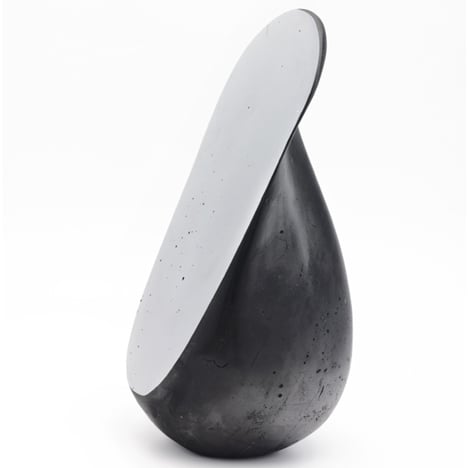
Studio Drift's Obsidian mirror made from chemical waste
Milan 2014: Amsterdam designers Studio Drift have fabricated a mirror from a synthetic glass created as a byproduct during the recycling of chemical waste.
Gordijn and Nauta of Studio Drift designed the mirror to demonstrate potential uses for synthetic obsidian – a dense, glass-like material made by melting residue and ash produced during a process used to extract raw materials from chemical waste.
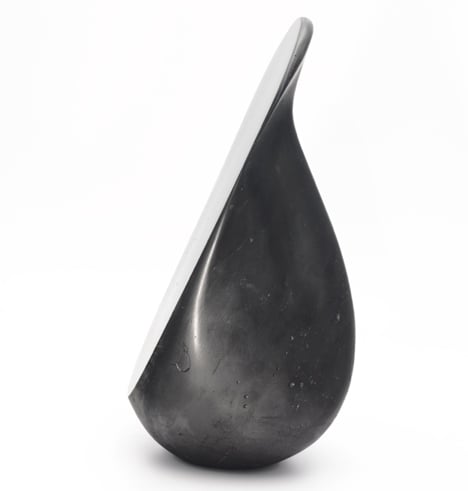
The recycling process involves gradually heating chemical waste in an industrial oven until it exceeds the melting points of different constituent materials, including gold, mercury and silver, which are extracted in liquid form.
The oven replicates the condition of a volcano, and the ash and residue left over at the end of the procedure can be reheated to produce a black glass that resembles the natural obsidian formed after volcanic eruptions.
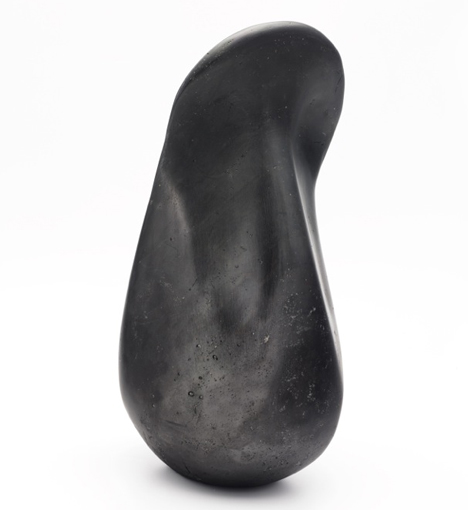
The designers first encountered synthetic obsidian when they met an engineer who was involved in recycling chemical waste and became intrigued by its sustainable credentials.
"Synthetic obsidian is a new raw material, which is completely transformed on a molecular level into a safe and beautiful material," Lonneke Gordijn told Dezeen.
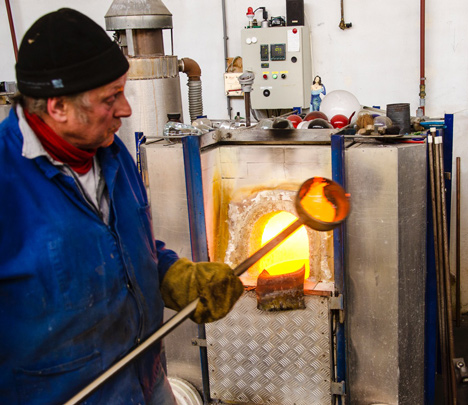
"Our aim is not only to develop valuable purposes for this material, but also to promote the technology and the possibility of recycling we have and what should become our standard," she added. "The mirror is a symbolic product, our main goal is to get the technology behind it to a higher level."
Over a period of several years, Gordijn and Nauta conducted experiments with synthetic obsidian aimed at identifying ways in which it could be used to develop practical and attractive products.

The mirror is produced by casting the molten material in a sand mould and allowing it to cool into a solid shape that is polished to create a reflective finish.
The seamless single-piece construction is suited to the casting process and incorporates a stable base that merges with the flat mirrored surface. Its form is based on a drop of water.
"Because the material is made of chemical waste we wanted to refer to the most pure of things, something that is the opposite of waste," Gordijn explained.
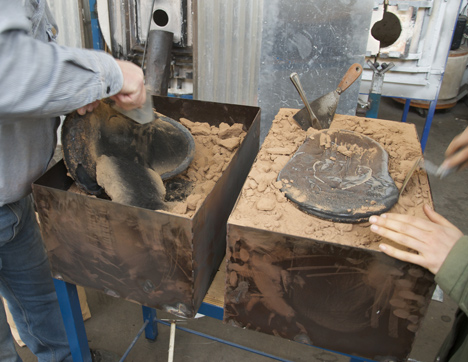
Gordijn pointed out that, as well as the precious appearance of the polished obsidian, the material has other surprising properties: "One of the weirdest discoveries was that the mirror sounded like metal, looked like glass and was heavy as stone. Although the mirror is a small object, it weighs 20 kilograms!"
The mirror was presented as part of Wallpaper magazine's Handmade exhibition during Milan design week and the designers claimed that they see it as a starting point for ongoing experimentation with synthetic obsidian.
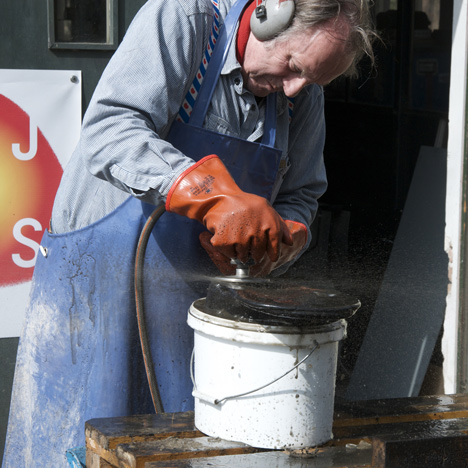
"We absolutely want to continue our research now that we know so much more about this material, and there is still so much to learn," said Gordijn. "The next steps would be to develop a stable and economic production method and to see how large we can go."
Photography of the mirror is by Erik and Petra Hesmerg.